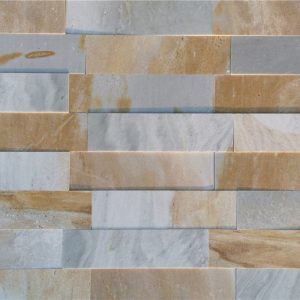The Beauty and Benefits of Cultured Slate for Roofing
Introduction Roofing is a critical component of any building structure, providing protection from the elements and enhancing the overall aesthetics of a property. Over the years, various roofing materials have been used, each with its own set of advantages and disadvantages. One material that has gained popularity in recent years is cultured slate. Cultured slate offers the beauty and elegance of natural slate while providing additional benefits in terms of cost, durability, and ease of installation. In this article, we will explore the characteristics, benefits, and applications of cultured slate for roofing. Characteristics of Cultured Slate Cultured slate is a synthetic roofing material designed to mimic the natural appearance of slate. It is typically made from a combination of cement, fibers, and additives that are molded and colored to resemble natural slate. Stone veneer for architectural features is available in a variety of shapes, sizes, and colors, allowing for customization to suit different architectural styles and preferences. One of the key characteristics of cultured slate is its lightweight nature. Traditional slate roofing can be heavy and may require additional structural support, whereas cultured slate is much lighter and easier to install. This weight reduction can lead to cost savings in terms of materials and labor during the installation process. Another important characteristic of cultured slate is its durability. Unlike natural slate, which can be prone to chipping and cracking, cultured slate is designed to be impact-resistant and weatherproof. It can withstand harsh weather conditions, such as heavy rain, snow, and hail, without deteriorating or losing its aesthetic appeal. Additionally, cultured slate is fire-resistant, making it a safe choice for roofing applications. Benefits of Cultured Slate There are numerous benefits associated with using cultured slate for roofing. Some of the key advantages include: 1. Cost-Effective: Cultured slate is more affordable than natural slate, making it a cost-effective alternative for homeowners and builders looking to achieve the look of slate without the high price tag. The reduced weight of cultured slate also contributes to cost savings during installation, as it requires less structural support and labor. 2. Low Maintenance: Cultured slate requires minimal maintenance compared to natural slate. It does not need to be sealed or treated regularly and is resistant to mold, mildew, and algae growth. This results in long-term savings on maintenance costs and ensures that the roof maintains its appearance over time. 3. Versatility: Cultured slate is available in a wide range of colors and styles, allowing for customization to match the architectural design of the building. Whether seeking a traditional or contemporary look, there is a cultured slate option to suit every preference. 4. Eco-Friendly: Cultured slate is an environmentally friendly roofing material. It is made from sustainable materials and can be recycled at the end of its lifespan, reducing waste and contributing to a more sustainable building industry. 5. Easy Installation: Cultured slate is lightweight and easy to install, requiring fewer labor hours and reducing the overall installation time. This can lead to cost savings for homeowners and builders and minimize disruption during the construction process. Applications of Cultured Slate Cultured slate is a versatile roofing material that can be used in a variety of applications. Some common applications include: 1. Residential Roofing: Cultured slate is an ideal choice for residential roofing projects, providing a classic and elegant look that enhances the curb appeal of a home. It can be installed on various roof slopes and styles, making it suitable for both traditional and modern residential properties. 2. Commercial Roofing: Cultured slate is also well-suited for commercial roofing applications, adding a touch of sophistication to office buildings, retail centers, and other commercial structures. Its durability and low maintenance requirements make it a practical choice for high-traffic areas. 3. Historic Preservation: Cultured slate can be used in historic preservation projects to maintain the authenticity and character of historic buildings. Its ability to replicate the look of natural slate while offering modern performance benefits makes it a popular choice for preserving the architectural heritage of older structures. 4. Architectural Features: In addition to roofing, cultured slate can be used for various architectural features, such as siding, accent walls, and decorative elements. Its versatility and aesthetic appeal make it a versatile material for adding visual interest to a building's exterior. Conclusion Cultured slate is a versatile and cost-effective roofing material that offers the beauty and elegance of natural slate with added benefits in terms of durability, cost savings, and ease of installation. Its lightweight nature, low maintenance requirements, and eco-friendly properties make it an attractive choice for residential, commercial, and historic preservation projects. Whether seeking a traditional or contemporary look, cultured slate provides a practical and visually appealing roofing solution for a wide range of applications. 